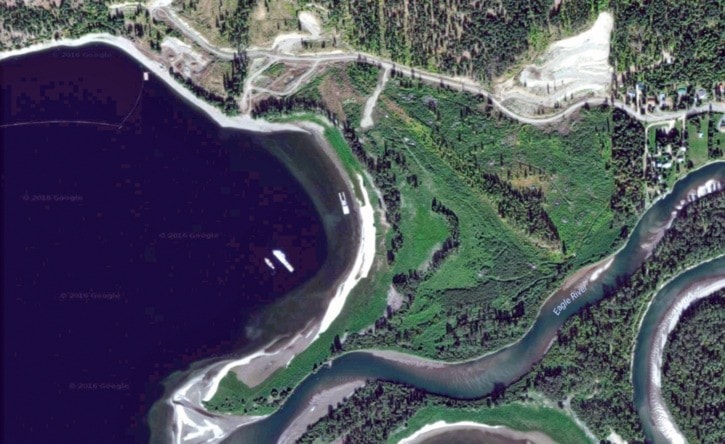Sicamous has some homework to do in its quest to establish a municipal campground.
This was the message delivered from B.C. government officials to District of Sicamous council during the recent Union of B.C. Municipalities convention.
Council went into this year’s convention having scheduled several meetings with different provincial ministries in advance. This included meetings with the Ministry of Aboriginal Relations and Reconciliation and the Ministry of Forests, Land and Natural Resource Operations (MFLNRO) to discuss the partnership the district shares with the Splatsin in the City of Enderby, who are collectively pursuing a community forest initiative.
Council also spoke with MFLNRO and the Ministry of Agriculture about a community campground initiative the district is working towards.
Regarding the campground, the district has identified a 40-acre property in the Old Town Bay area that might be utilized. In June, Mayor Terry Rysz confirmed the district had received consent from the landowner to apply to the Agricultural Land Commission (ALC) for conditional approval for a land use application for non-farm use.
“We’re not looking to move it from the ALR (Agricultural Land Reserve), we’re just looking to find some sort of mechanism in which we can have a community campground on ALR land, because that’s all we’ve got, that’s what surrounds Sicamous,” said Rysz following the UBCM convention.
To be successful with the ALC, Rysz explained he and council were advised at UBCM that the district would have to develop an agricultural use for the property while it is also being used for camping.
“Right now the land that we’re looking at is not producing anything for agriculture,” said Rysz. “So if we come up with a plan, we put in grapes or hops or whatever, and it supports the campground and the campground supports the agricultural side of this, I think that might be an avenue.
“We’ve kind of got to rethink where we’re going with this… if we can have some sort of unique arrangement where – maybe we could put a community garden that is in conjunction with the campground.”
The District of Sicamous contingent were also advised at UBCM that more work had to be done regarding its pursuit of a community forest. While Rysz didn’t go into as much detail on this, he explained there are challenges around the different lumber companies and the province’s allocation of tenures.
“But they gave us some advice as to what we need to do to move forward. So that was positive,” said Rysz.
The mayor emphasized how during those meetings, council, with the support of representatives from Splatsin and Enderby, as well as Shuswap MLA Greg Kyllo, was able to leave an impression with the province of the benefits these initiatives would have for the community and region.
Rysz added the partnership alone between Splatsin, Enderby and the district had left a positive impression with every one of the ministries the group met. As for Kyllo, Rysz said his support was consistent and invaluable.
“He was absolutely amazing and he was just great on giving us the score,” said Rysz.
While at UBCM, the district brought forward a resolution which was endorsed unanimously by convention delegates. The resolution, if supported by the province, would allow a community applying for grant money for a large project (say, a water treatment plant), to use in their application shelf-ready documentation of communities that have already undertaken similar projects.
The mayor noted he and council worked pretty much around the clock during the convention, be it attending meetings, networking with other local government representatives or listening to the various guest speakers. One of those speakers who got Rysz’s attention was NDP leader John Horgan, who commented on how an NDP government would see the four-laning of the Trans-Canada Highway, from Kamloops to the Alberta border, done sooner than later.
“I’m a huge advocate of trying to get this four-laning done and I don’t want to see it happen in 2050, I want to see it done in the next 10 years, and I don’t see why it can’t be if the federal government came across and gave us some infrastructure money,” said Rysz.
